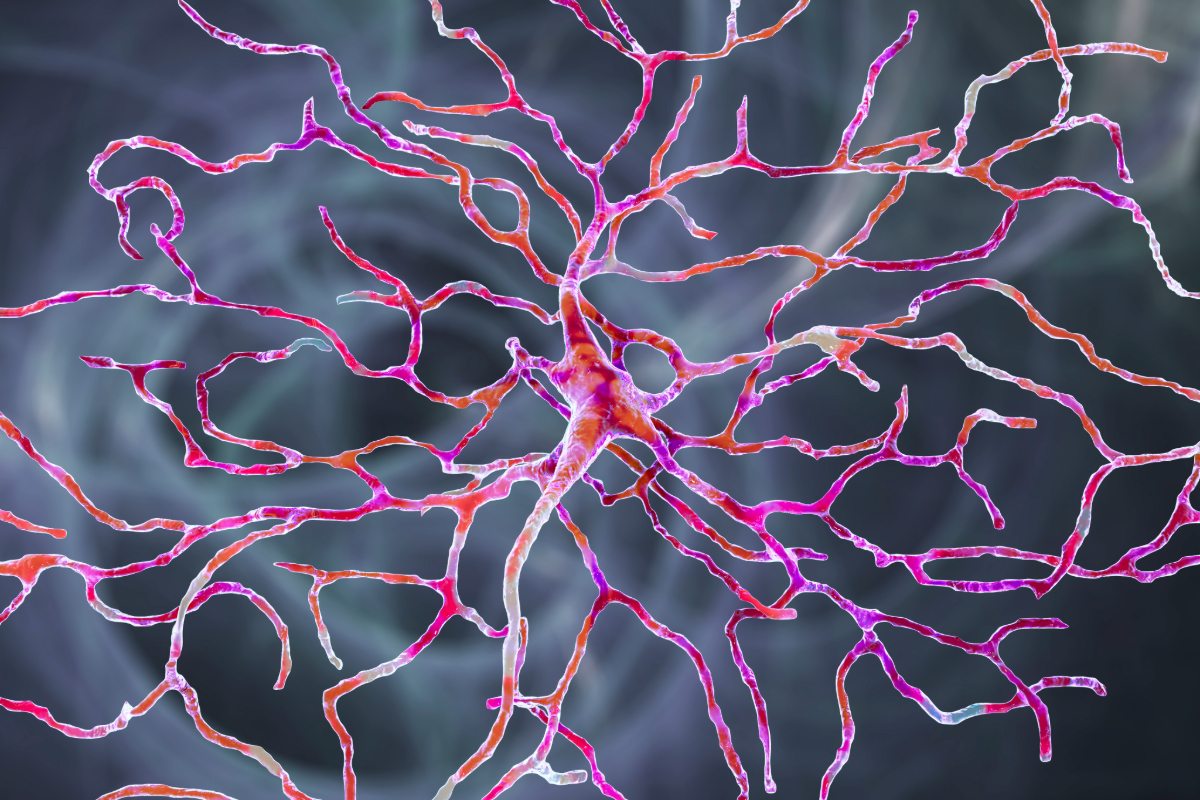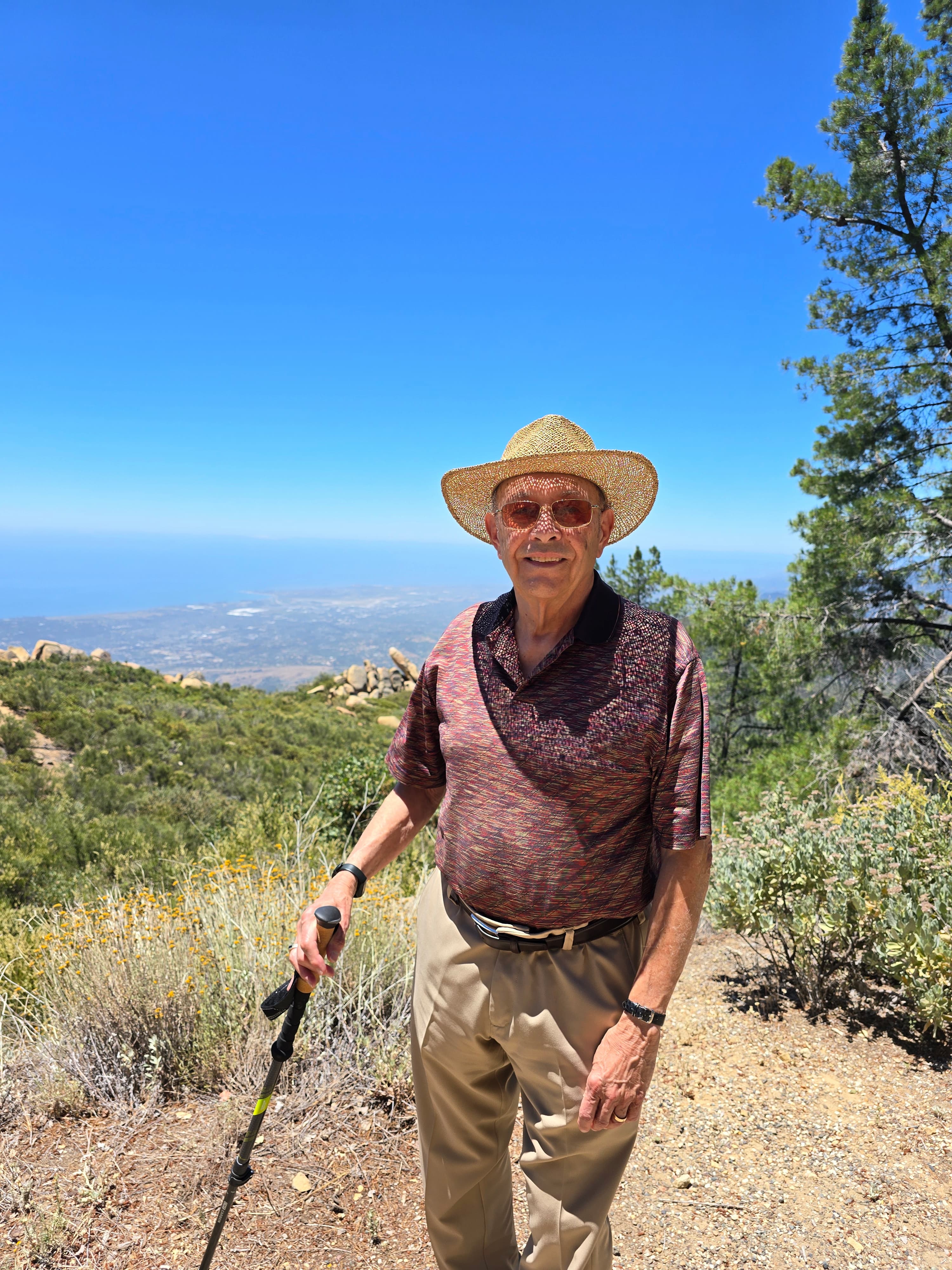
Although Alzheimer’s disease, macular degeneration, and glaucoma are different neurodegenerative diseases with devastating impacts on mind and sight, they share a common factor. They all damage, and eventually destroy, nerve cells (neurons) in the eye and brain—a phenomenon called neurodegeneration—for which there is currently no treatment.
Neurodegenerative diseases affect millions of people worldwide. Alzheimer’s and Parkinson’s disease are the most common neurodegenerative diseases, according to the National Institute of Environmental Health Sciences. Further research into the causes of neurodegeneration could help unlock potential new treatments for Alzheimer’s, glaucoma, macular degeneration, and Parkinson’s, to name just a few.
Here we explain what causes neurodegeneration, how to reduce your risk, and how researchers are exploring common pathways to find a cure faster.
Neurons—the brain’s building blocks
Neurodegenerative diseases occur when neurons in the brain or peripheral nervous system lose function over time and ultimately die. It’s estimated that the brain has close to a billion neurons, and each eye has approximately 100 million. Visual neurons can be found in the retina, an inner layer at the back of the eye that receives light signals and transmits them to the brain.
Neurons of the eye, brain, and nervous system have a similar shape: a large body with root-like extensions branching off. Each extension includes a single axon, which transmits information away from the nucleus, and numerous dendrites, which receive messages from other neurons.
Signals pass between axons and dendrites through a junction called a synapse. Each neuron is connected to hundreds of other cells by as many as 10,000 synapses, with the total number of synapses climbing to as many as a trillion. Together, these connections form a brain communication network that records and connects our thoughts, behaviors, feelings, and actions.
Unlike other cells, including skin, muscle, and bone cells, neurons do not regenerate. But the brain is considered “plastic,” meaning it can adapt to new demands and is constantly making new synapses. Scientists believe that learning and the creation and retrieval of memories depend not only on the neurons we are born with, but also the strength and volume of synaptic connections that build throughout our lives.
Keith Hengen, PhD, a BrightFocus Alzheimer’s Disease Research grantee at Washington University in St. Louis, uses a systems-and-mathematical approach to understanding how degenerative diseases change the brain and whether these changes are determined by the strength and coordination of brain networks. Dr. Hengen is studying whether a disruption in early-life brain activity that handicaps network building can predict future neurodegeneration and calls his grant “an open door into a new field of research.” Dr. Hengen recently received BrightFocus’ first Distinguished Investigator Award for Alzheimer’s Disease Research for this exciting work.
Causes of neurodegeneration
Aging is a major risk factor for Alzheimer’s disease, macular degeneration, glaucoma, and other neurodegenerative diseases. As people live longer, several factors contribute to neuron deterioration.
Environmental stress
Stressors on the eye and brain come from exposure to harmful substances, such as smoke, air pollution, ultraviolet radiation, pesticides, and other toxic chemicals, and from substances we ingest, including alcohol, drugs, and unhealthy foods. These substances put oxidative stress on cells, potentially triggering inflammation and protein misfolding, which are linked to neurodegenerative disease.
Dysfunctional cellular housekeeping
Cells responsible for removing cellular waste lose function with age. When debris collects in and around neurons, eye and brain immune cells may interpret that as an infection or similar threat and overreact with a damaging immune response. Experts have linked macular degeneration to a chronic sterile inflammation that may be provoked by the accumulation of fatty debris called drusen.
Poor health and chronic disease
Poor overall health and health habits increase the risk of neurodegeneration. Smoking and high-glycemic diets (those high in refined sugars and starches) have been implicated in age-related macular degeneration. Hypertension increases the risk of glaucoma. BrightFocus Alzheimer’s Disease Research grantee Kristine Yaffe, MD, PhD, University of California, San Francisco, was one of the first scientists to link poor glucose control or Type 2 diabetes with an increased risk of Alzheimer’s, a connection now widely recognized. Her research has also linked sleep disorders, depression, post-traumatic stress disorder, and other conditions to an increased risk of Alzheimer’s neurodegeneration.
Genetics
Late-onset Alzheimer’s, age-related macular degeneration, and primary open-angle glaucoma cannot be inherited as a single genetic mutation that, on its own, will cause you to develop the disease. However, scientists have discovered dozens of lower-level genetic irregularities, known as risk factors, that may contribute to the development of these diseases. Genetic factors can be heightened or minimized when they interact with environmental and lifestyle factors.
Protecting the eyes and brain
Research has shown that lifestyle factors such as diet, sleep, and exercise, along with educational pursuits, can be beneficial in the fight against neurodegenerative diseases.
Emily Chew, MD, and colleagues at the National Eye Institute found that a Mediterranean diet high in fruits, vegetables, beans, nuts, fish, and olive oil slowed age-related macular degeneration development by as much as 25 to 30 percent. The Mediterranean diet was also associated with a reduced risk of cognitive impairment.
“It seems like the brain and the eye are really tied together,” Dr. Chew said in a BrightFocus Chat.
A similar eating pattern, the Mediterranean-DASH Intervention for Neurodegenerative Delay, or the MIND diet, was developed specifically for brain health. Studies have linked it with slower brain aging and reduced risk of Alzheimer’s. MIND food choices are drawn from both the Mediterranean diet and the Dietary Approaches to Stop Hypertension (DASH) diet.
Getting the recommended amounts of sleep and exercise also protects against neurodegeneration. Exercise improves circulation, boosting metabolism and the reliable delivery of vital nutrients and oxygen. Good sleep habits—reaching the recommended 7 to 9 hours—help ensure a nightly quotient of slow-wave “deep sleep.”
Throughout our lives, factors such as education, mental activity, and learning new skills can also play a role in strengthening our brains. Improving the “plasticity” and connectivity of our brains by growing new synapses and strengthening the ones we have may help defend against neurodegeneration.

Researchers are exploring common pathways
Is neurodegeneration in the eye and brain related? Research linking the two is expanding.
- Many scientists view the eye as a window to the brain. It might not be long before Alzheimer’s is diagnosed through detection of Aß plaques in the eye, or by measuring vascular changes there that reflect a reduction in density and flow of small blood vessels in the brain.
- An international study found that people with normal tension glaucoma—which damages eye neurons even at normal eye pressure—have a 50% higher risk of developing Alzheimer’s.
- A BrightFocus Alzheimer’s Disease Research grantee has shown that the APOE4 genetic mutation associated with an increased risk of Alzheimer’s is protective against glaucoma, potentially paving the way for a new treatment.
- Another Alzheimer’s Disease Research grantee is investigating the crosslink of senescence—when cells eventually stop multiplying but don’t die off—and inflammation in neurodegeneration.
As these studies multiply, findings can amplify one another in the search for a treatment or cure. In addition to funding research studies, BrightFocus Foundation is a leader in cross-disease efforts to bridge research into neurodegeneration of the eye and brain through several initiatives, including:
- Sponsoring the open-access scientific journal Molecular Neurodegeneration. All articles are free and permanently accessible online; Molecular Neurodegeneration has been ranked the No. 1 open-access journal in the neuroscience category for nearly a decade.
- Sponsoring a biannual symposium, “Common Features of Neurodegenerative Disease: Exploring the Eye-Brain Connection and Beyond.”
- Co-publishing a white paper, “Solving Neurodegeneration: Common Mechanisms and Strategies for New Treatments,” which links ideas in mind and vision research.
- Collaborating with the International Society for Molecular Neurodegeneration (ISMND) and Molecular Neurodegeneration to launch an international conference focused on the molecular mechanisms underlying neurodegenerative diseases.
The bottom line
As we age, the neurons in our brains become more susceptible to deterioration, which increases the risk for neurodegenerative diseases like Alzheimer’s disease, macular degeneration, and glaucoma. Protect your eyes and brain by eating a healthy diet, getting enough sleep, exercising regularly, and learning new skills, which can increase brain plasticity. Scientists are investigating the causes of neurodegeneration, which could help unlock potential new treatments for diseases like Alzheimer’s, glaucoma, macular degeneration, and Parkinson’s.
About BrightFocus Foundation
BrightFocus Foundation is a premier global nonprofit funder of research to defeat Alzheimer’s, macular degeneration, and glaucoma. Since its inception more than 50 years ago, BrightFocus and its flagship research programs—Alzheimer’s Disease Research, Macular Degeneration Research, and National Glaucoma Research—has awarded more than $300 million in research grants to scientists around the world, catalyzing thousands of scientific breakthroughs, life-enhancing treatments, and diagnostic tools. We also share the latest research findings, expert information, and resources to empower the millions impacted by these devastating diseases. Learn more at brightfocus.org.
Disclaimer: The information provided here is a public service of BrightFocus Foundation and is not intended to constitute medical advice. Please consult your physician for personalized medical, dietary, and/or exercise advice. Any medications or supplements should only be taken under medical supervision. BrightFocus Foundation does not endorse any medical products or therapies.
- Disease Biology








